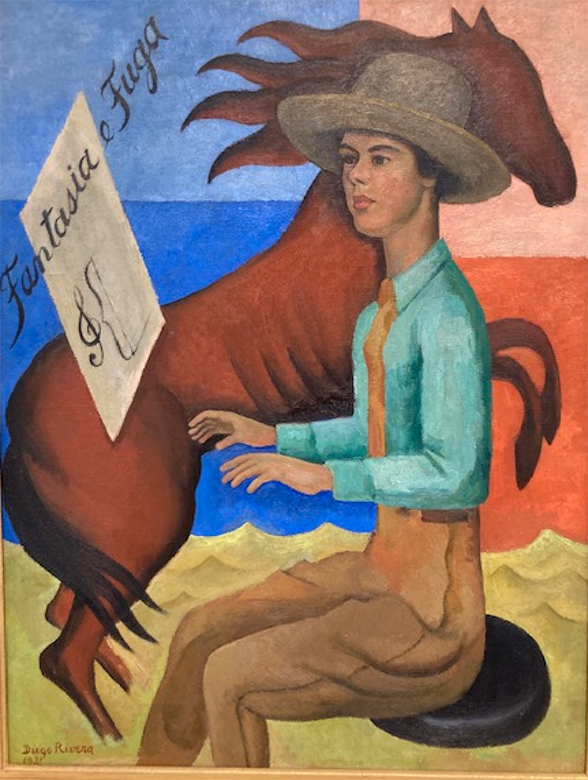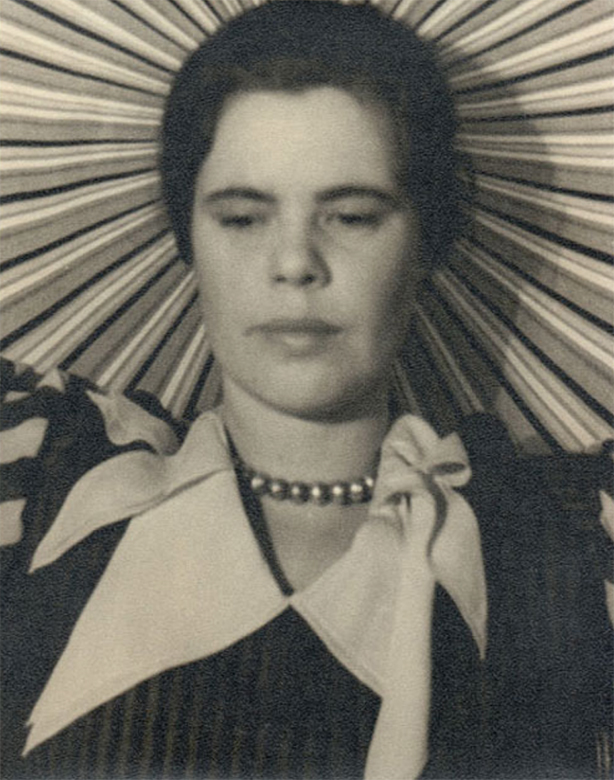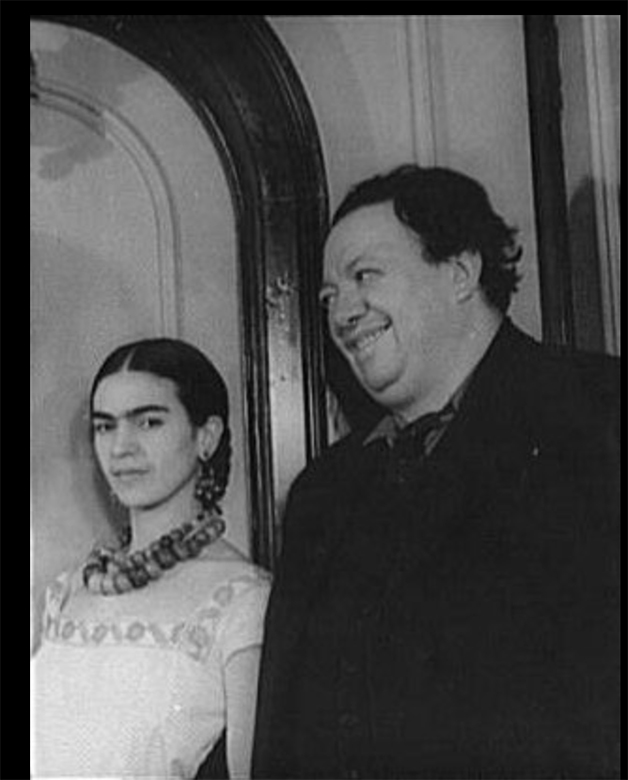
Fantasia e Fuga, Diego Rivera
*
July 9, 2023
by Philip Gambone
Every time I visit a museum, no matter how keenly focused I am on what I want to see, I'm ambushed by some unexpected discovery. This was the case on a recent visit to the Davis Museum at Wellesley College. I'd gone there to see their pre-Columbian collection, which is quite fine for a small, college museum. But what totally enchanted me were not the Aztec ceramics, but an enigmatic painting by the great Mexican painter Diego Rivera.
It is a portrait of the American poet, Mary Channing "Marina" Wister, which Rivera painted in 1931. In the painting, titled "Fantasy and Fugue," Rivera posed Wister, who was also an accomplished pianist, with her hands poised to play. Curiously, the piano is missing. Equally puzzling is the fact that she is decked out in horseback riding clothes, and a horse is rearing up behind her. The Italian phrase "Fantasia e Fuga," which runs across a page of sheet music before her, references one of several compositions by Bach.
In the early 1930s, Wister was living in Philadelphia, but the brightly colored walls in the background of the portrait suggest that Rivera painted her in his Mexico City studio during a visit she made there. When I discovered the Rivera portrait, I immediately wanted to know more about this woman who had inspired such a handsome, colorful, and mysterious painting.
Wister was born in 1882. She was the daughter of Owen Wister, an American writer and historian, best remembered as the author of The Virginian, one of the first Western novels. In 1933, she married Andrew Michael Dasburg (1887-1979), an American modernist painter and an early champion of cubism, who had contributed to the famous 1913 Armory Show. Like his wife, Dasburg was attracted to Mexican culture.

Mariana Wister
*
Six years after Rivera painted her portrait, Wister published a book of poems, to which she gave the same title as the Rivera painting. She dedicated her book: "Para mis amigos, D.R. and F.K. de R, como recuerdo," a reference to her good friendship with Rivera and his wife, Frida Kahlo.
Wister's book, Fantasy and Fugue, included 31 poems under the heading "From Mexico." Each poem highlighted the landscape, the towns, and the people of this country that she deeply loved. I found a review of the book printed in the New York Times on April 28, 1938. The anonymous reviewer noted that Wister's Mexican pieces were particularly strong: "Miss Wister appears to have looked about her with keenly observing eyes," adding that these poems were "vividly pictorial and colored."
I was even more fortunate to find a library copy of the book and read Wister's poems with delight and admiration. She was a polished poet. Her rhymes are as winsome as those of her contemporary, Dorothy Parker, her lyricism as lovely as Edna St. Vincent Millay's.
That early reviewer was right: Wister's Mexican poems are among the best in the collection. In poem after poem, she celebrated the landscape of Mexico. Any reader today who has visited Mexico even a few times will recognize Wister's descriptions of the stands of corn and "pale magueys" that spread out like "arrested fountains;" the "stiff flat-fruited hieratic nopals;" the jungles and volcanos she called "fire-mountains." In one short poem, she described a cactus forest as "lurching gallow-trees." In another, she noted the "vacant heaving wastes" of the arid stretches she saw from a train.

I especially loved her vivid imagery of Mexican towns, "where every street wears a name of glory and death;" the plazas and bars, houses with "red-scalloped tiles" and "faded pink façades;" the churches with their "scintillant fanciful domes;" the shops "like midget theatres in a row." When she described the "garlanded masonry" of 18th century buildings, I immediately thought of the handsome stonework on the Casa de Canal off the Jardín or the House of the Inquisitor on Calle Cuadrante.
Indeed, Wister was alert to every aspect of Mexican life: the "drenching light" and "blinding air;" "the zopilote on awful wings;" the "reek of pulque;" the "flaming tongues of music." Her sketches of Mexicans are never condescending. She loved the "antique dignity" of the people she encountered: women squatting by little stoves; the "gaudy horsemanship" of the charros; the china poblana decked out in "bracelet and pendant, necklace and bangle."
Her poem "Xochimilco," one of my favorites, celebrates the "floating festivals" of that famous park in Mexico City: